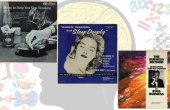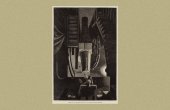Of Sound Minds and Tuning Forks: Neuroscience’s Vibratory Histories
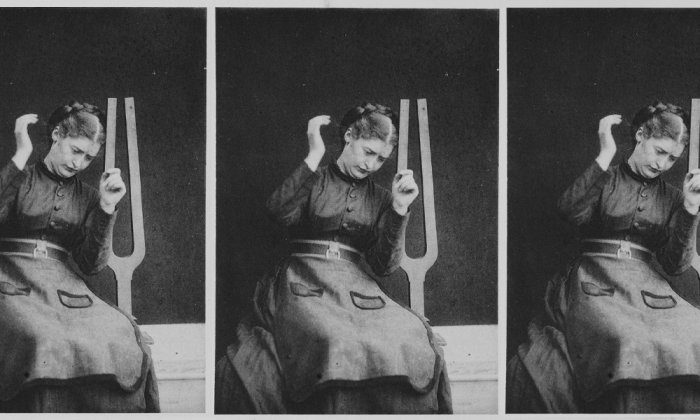
One intriguing image stands out in the “Iconographie photographique de la Salpêtrière,” a late-19th-century collection of photographs of the psychiatric wards of Paris’s leading public hospital, the Salpêtrière, taken by physicians Désiré-Magloire Bourneville and Paul Régnard. A woman sits next to an immense tuning fork, her head tilted to one side and an expression of deep concentration on her face. The size of the instrument is astonishing, as is the claim that the photograph depicts catalepsy — a trancelike state where a person’s muscles become rigid and their body position fixed — provoked by the sound of a tuning fork. But I find the image remarkable for another reason: I see in it a literal snapshot of two intersecting ideas — the notion that music directly influences our minds, bodies, and emotions; and the historical theory that vibration plays an essential role in nervous transmission.
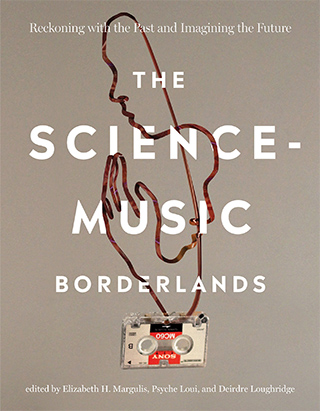
Bourneville and Régnard documented a number of Jean-Martin Charcot’s neurological experiments with sound. Charcot, generally regarded as the founder of modern neurology, held the first chair in nervous diseases at the Salpêtrière. He is remembered today for his work on multiple sclerosis, epilepsy, and Parkinson’s disease, as well as for his more controversial studies of hysteria. His students, a veritable who’s who of pioneering neurologists, included Sigmund Freud, Gilles de la Tourette, and Joseph Babinski.
Charcot provides the following account of tuning fork trials, which were conducted on patients whose minds and bodies were particularly susceptible to suggestion:
The patients are seated over the sounding box of a strong tuning fork, made of bell metal, vibrating 64 times in a second. It is set in vibration by means of a wooden rod. After a few moments the patients become cataleptic, their eyes remain open, they appear absorbed, are no longer conscious of what passes around them, and their limbs preserve the different attitudes which have been given them.
Charcot’s understanding of catalepsy differs from modern-day applications of the term. According to the 1876 edition of the “Encyclopaedia Britannica,” catalepsy was “a nervous affection characterized by the sudden suspension of sensation and volition, accompanied with a peculiar rigidity of the whole or of certain muscles of the body.”
As Charcot himself noted, his investigation of mechanisms for inducing catalepsy by means of sounds (or other stimuli) takes up where James Braid, the “discoverer” of hypnosis, and other neurologists left off. Yet the French physician was not convinced that suggestion alone was responsible, declaring “that every phenomenon of the natural order, whatever be its appearance of complication or of mystery, is none the less a subject of methodical observation.”
To this day, our language reflects the absorption of these ideas — consider the personal descriptors “highly strung” or “low key.”
In what follows, I demonstrate how Charcot’s experiments reflect vestiges of vibrating nerve theory, an underlying assumption of 19th-century neural science that originated with Isaac Newton. Showing how the reception of this theory depended on, and was intertwined with, specific features of sound, it becomes clear that music played an important role in the emergence of what eventually became the modern neural sciences.
Up until the late 17th century, the dominant model of nervous transmission in Europe involved some version of the ancient Galenic theory of animal spirits. Accounts of the manner in which the mind communicated with the heart, or any other organ, tended to refer to the lungs as bellows and the nerves as hollow pipes, as in the writings of René Descartes and Thomas Willis, among others. Yet changing conceptions of physiology, and of electricity and action at a distance, contributed to the rise of a different model of nervous transmission in the early 18th century: vibrating nerve theory.
The notion that nervous transmission might relate to vibration was first articulated by Isaac Newton in his “Opticks,” where he hypothesized the existence of an “Aethereal Medium” pervading the universe. This same almost infinitely subtle substance, or “spirit,” was, he suggested, responsible for sensation and muscle movement by acting as the medium for vibrations traveling within and between the nerves and the brain. Analogizing between the function of the optical and auditory nerves, Newton broke with the doctrine of hollow, animal-spirit-bearing nerve pipes to suggest that solid nerves, acting as the routes of travel of this ethereal medium, could enable vibratory transmission:
Is not Animal motion performed by the Vibrations of this Medium, excited in the Brain by the Power of the Will, and propagated through the solid, pellucid and uniform Capillamenta of the optick Nerves into the Muscles, for contracting and dilating them?
Newton here linked muscular motion to psychic motivation via the physical vibrations propagating through the ethereal medium in the nerves. He further developed this scheme in the “General Scholium” appended to the second edition of his “Principia” in 1713. In the famous concluding passage, he suggested that the ethereal medium pervading the nerves and linking the mental faculties and their corporeal instrumentalities — will and perception; muscles and sense organs — must be in some way vibratory, elastic, and electric:
All sensation is excited, and the members of animal bodies move at the command of the will, namely, by the vibrations of this spirit, mutually propagated along the solid filaments of the nerves, from the outward organs of sense to the brain, and from the brain into the muscles. But these are things that cannot be explained in few words, nor are we furnished with that sufficiency of experiments which is required to an accurate determination and demonstration of the laws by which this electric and elastic spirit operates.
Newton’s statements catapulted vibrating nerve theory to the center of scientific and philosophical discourse. Vibration and sympathetic resonance — that is, the acoustical fact that a resonating body vibrates in response to external sound vibrations to which it stands in a harmonic (i.e., simple proportional) relationship — were readily evident to anyone with access to a string instrument. Thus, rather than wind chests and hollow organ pipes, strings became the dominant musical analogy for this theory of nervous transmission. This idea caught on very quickly, as evidenced by the care contemporaneous writers took to refer to both animal spirits and Newtonian ethereal vibrations or to some amalgamation of the two. Thus, John Locke clarifies that either model can be applied to his model of perception in “Remarks upon Some of Mr. Norris’ Books” (1706):
And whether or no God has appointed that a certain modified motion of the fibres, or spirits in the optic nerve, should excite, or produce, or cause them in us, call it what you please, it is all one as if it did; since where there is no such motion there is no such perception or idea.
Similar equivocation can be found in English physician William Cheselden’s “Anatomy of the Human Body,” which proposes that “perhaps sensations may be conveyed either, or both ways. However, it being usually taken for granted, that it must be one of these ways at least.” By the middle of the 18th century, however, vibration had clearly won out as the primary mechanism of neural transmission, giving rise to a number of competing models in Britain and on the Continent.

Perhaps the most influential of the so-called vibrationalist theories was devised by the English physician and philosopher David Hartley in “Observations on Man, His Frame, His Duty, and His Expectations,” first published in 1749 (Hartley published an earlier version of this theory in 1730 as “Conjecturae quaedam de sensu, motu, & idearum generatione”). Explicitly referring to Newton’s hypothesis that an electric, ethereal substance enables nervous transmission, he proposed a “doctrine of vibrations,” according to which
external objects impressed upon the senses occasion, first in the nerves on which they are impressed, and then in the brain, vibrations of the.… infinitesimal, medullary particles … [these] sensory vibrations, by being often repeated, beget, in the medullary substance of the brain, a disposition to diminutive vibrations, which may also be called vibratiuncles … corresponding to themselves respectively.
In Hartley’s scheme, mental operations such as perception, thought, and memory were caused by infinitesimally tiny neural vibrations either experienced immediately by the brain as sensation or, in the case of thought and memory, called up as faint reverberations of associative neural pathways, enabling the brain to replicate or compound traces of earlier experience. He regarded the vibrations that enabled nervous transmission as manifestly electric in some way, observing:
The effluvia of electric bodies seem to have vibrating motions.… Their motions along hempen strings resemble the motions along the nerves in sensation and muscular contraction, and their attractive powers, at the end of such strings, resemble the powers of the sensations over the muscles for contracting them. So that electricity is also connected in various ways with the doctrine of vibrations.
For Hartley, these electric vibrations were obviously distinct from the material, mechanical vibrations generated by musical strings. As he emphasizes: “For that the nerves themselves should vibrate like musical strings, is highly absurd; nor was it ever asserted by Sir Isaac Newton, or any of those who have embraced his notion of the performance of sensation and motion, by means of vibrations.”
Yet in spite of Hartley’s explicit warning, this mechanical version of vibrating nerve theory rapidly proliferated both within and beyond the medical domain, where it was often conflated with generic notions about sympathetic resonance. In his article on the effects of music in the “Encyclopédie,” for example, French physician Ménuret de Chambaud (1765) asserted:
If one considers the human body simply as an assemblage of fibers under varying degrees of tension, and fluids of various kinds, disregarding their sensitivity, life, and movement, it will be quite clear that music must have the same effect on the fibers which it has on the strings of nearby instruments; that all the fibers of the human body will be set in motion; that those which are more tense, fine, and slender will be more moved by it, & that those which are in unison will preserve [that motion] longer.
Similar ideas were expressed by James Beattie in his “Essays: On Poetry and Music, as They Affect the Mind.” He likewise ascribed music’s effects to the mechanical resonance of the “finer fibres” — that is, the nerves — of the body:
If a person who sneezes, or speaks loud, in the neighbourhood of a harpsichord, often hears the strings of the instrument murmur in the same tone, we need not wonder, that some of the finer fibres of the human frame should be put in a tremulous motion, when they happen to be in unison with any notes proceeding from external objects.
The currency of such ideas also attained popularity in more distant domains such as philosophy and literature, where the notion of “resonating” nerves was metaphorically applied to explain mental or psychic events. In a striking passage, for example, the German philosopher and critic Johann Gottfried Herder borrowed the notion of sympathetic resonance to explain the affective power of certain genres of poetry on the reader:
Since the comparison of the nerve structure of feeling to a harp is very accurate, let me emphasize that just as a string only resonates with another with which it is harmoniously attuned, so the cries of the elegy demand the reader’s soul be pitched to the same tone.
Moving even further from the sphere of the nerves, the French philosopher Denis Diderot applied the same acoustic features to model the association of ideas within the mind itself. “Vibrating strings,” he wrote, “have yet another property, that of making other strings vibrate; and that is how the first idea recalls a second, the two of them a third, these three a fourth and so on, so that there is no limit to the ideas awakened and interconnected in the mind of the philosopher.”
The English poet Samuel Taylor Coleridge (who was so taken with Hartley’s ideas that he named his firstborn Hartley Coleridge) explicitly likened mental function to the sympathetic resonance between strings in his influential poem “The Eolian Harp” (1796):
Full many a thought uncalled and undetained,
And many idle flitting phantasies,
Traverse my indolent and passive brain,
As wild and various as the random gales
That swell and flutter on this subject Lute!
And what if all of animated nature
Be but organic Harps diversely framed,
That tremble into thought, as o’er them sweeps
Plastic and vast, one intellectual breeze,
At once the Soul of each, and God of all?
These examples are just a tiny sample of the widespread metaphoric transference of ideas about vibration and resonance from acoustic to neural to mental domains of feeling and thought in the late 18th and early 19th centuries. Indeed, scholars have convincingly argued that the “cult of sensibility” arose directly from the early Romantics’ fascination with Enlightenment neural science. To this day, our language reflects the absorption of these ideas by philosophy and aesthetics — consider the personal descriptors “highly strung” or “low key.” For countless thinkers throughout Europe, music provided a rich storehouse of metaphors by which to conceptualize subjective and neurophysiological experience alike, at least in part because it was deeply imbricated in generating altered emotional and physical states in the first place.
Music provided a rich storehouse of metaphors by which to conceptualize subjective and neurophysiological experience alike.
One arena in which this interaction played out in practice was incipient music therapy, which became closely associated with the employment of novel instruments and timbres. In the late 18th century, reports of Mesmer’s reliance on the ethereal tones of the newly invented glass harmonica in his seances, ostensibly because these particular vibrations enhanced the nerves’ receptivity to his “magnetic fluid,” soon inspired various music-therapeutic theories and case studies documenting the effects of the timbres of other novel musical instruments that were believed to strongly affect the nerves. This was particularly true of females, whose nervous systems, during most of the 18th and 19th centuries, were regarded as more delicate and hence more susceptible than those of men, and many more women than men were the subjects of case reports of conditions such as catalepsy.
The conflation of electrical and acoustical nerve stimuli noted earlier is also evident in the domain of music criticism. The decades between 1830 and 1850 saw a rise in metaphorical comparisons of the nerves’ susceptibility to music and the transmission of electricity. Reporting on the great piano virtuoso Franz Liszt, for example, French music critic Paul Scudo rhapsodized over “his iron fingers, which diffuse nervous energy as the voltaic pile diffuses electric force.… Liszt stimulates the nerves.” The composer Hector Berlioz similarly described the experience of conducting an orchestra using electrical metaphors, noting that the conductor’s “inner flame will warm [the musicians], his electricity will charge them, his drive will propel them. He will radiate the vital spark of music.” Many comparable examples could be given here, as musicologist Francesca Brittan has recently and compellingly demonstrated. But whereas Scudo saw Liszt’s musical charisma as praiseworthy, Friedrich Nietzsche, half a century later, attributed the balefully seductive appeal of Wagner’s music entirely to its ability to “stimulat[e] tired nerves,” a shift in attitude reflecting the increasing currency after 1870 of the psychopathological diagnosis of neurasthenia and its impact on the understanding of music’s effects on the nerves.
To summarize, the popular reception of 18th-century vibrating nerve theory seemingly depended to a large extent on two attributes that were closely associated with music. First and foremost was the well-known fact that music — regarded as consisting, physically, of nothing more than sonorous vibrations — can fundamentally alter our emotions. The idea that the mental changes brought about by music might somehow relate to material changes in the nerves in response to sound thus seemed highly intuitive. The second attribute was the phenomenon of sympathetic resonance, which — since at least the Renaissance — was intimately linked with, and often paradigmatically demonstrated by, sound. Vernacular understandings of vibrating nerve theory thus conflated music’s powerful effects on the mind with an acoustic phenomenon familiar from the domain of music to account for a diverse range of cognitive and affective experiences.
Charcot’s English contemporary Joseph Mortimer Granville — remembered today as the inventor of the percuteur, a mechanical vibrating device intended to treat muscle pain — provides a late-19th-century example of the unexpectedly long afterlife of vibrating nerve theory and its musical entanglements. Discussing hysteria in the introduction of his “Nerve-Vibration and Excitation,” he proposed that the predisposition to hysteria was simply the nerves’ overactive tendency to vibrate in sympathy with external or disruptive elements:
If musical burners, supplied from different reservoirs of gas, will presently vibrate in concord; if strings or reeds vibrating at the same time, though a short distance apart, will fall into harmony, why is it unlikely that nervous organisms, possessing the same qualities of physical structure, should exhibit a corresponding affinity?
This passage, which could have been written a century earlier, if not for the reference to gas, invokes sympathetic vibration alongside musical instruments and terminology to account for the suggestibility of the nerves of patients suffering from hysterical afflictions. Granville goes on to remark that this condition was common chiefly in females, whose “organism is characterized not inaccurately, though popularly, by the phrase ‘finely strung nerves,’” but also in men of a “feminine character.” The English physician, it should be emphasized, did not study hysteria — indeed, he averred that he had “never yet percussed a female patient” — but rather focused his research almost exclusively on the amelioration of pain.
Granville also offers a hypothesis about how the effects of vibration affect the nervous system:
The first effect of nerve-vibration, therefore, is awakening or interrupting; the second is more like tuning a violin string, or the wire of a pianoforte. Nerve stretching acts in one of two ways for a time. If much force be used it disorganizes the nerve and prevents any vibration taking place in its elements, with the result, in successful cases, of giving it a new starting-point when the integrity of the nerve-fibre is restored in the process of natural repair. When less force is used, the nerve is acted upon precisely as screwing and stretching act on a violin string, altering its physical capacity for vibration, and either reducing or increasing the amplitude of the waves of movement into which agitation will throw it.… The manner in which vibration acts … is, I believe, explained by the law of musical concords and discords or harmonies.
Granville was renowned for his experiments with vibrating medical devices starting in the late 1870s, and his ideas were well known at the Salpêtrière; indeed, Charcot’s student Gilles de la Tourette explicitly modeled a vibrating helmet, designed to treat neuralgia, on a similar invention by the Englishman. In parallel with his investigations into the effects of vibrations on hysterics, Charcot employed vibratory devices to treat neurological conditions we would recognize today: The giant tuning fork set on a resonating bench was used to alleviate locomotor ataxia, and upon learning that patients with Parkinson’s disease obtained temporary relief from symptoms after a bumpy train ride, he developed a vibrating chair to mimic these results. The apparent failure of these late-19th-century physicians to acknowledge a clear distinction between electrical and acoustical vibrations reflected the broader scientific landscape in which their investigations were situated.
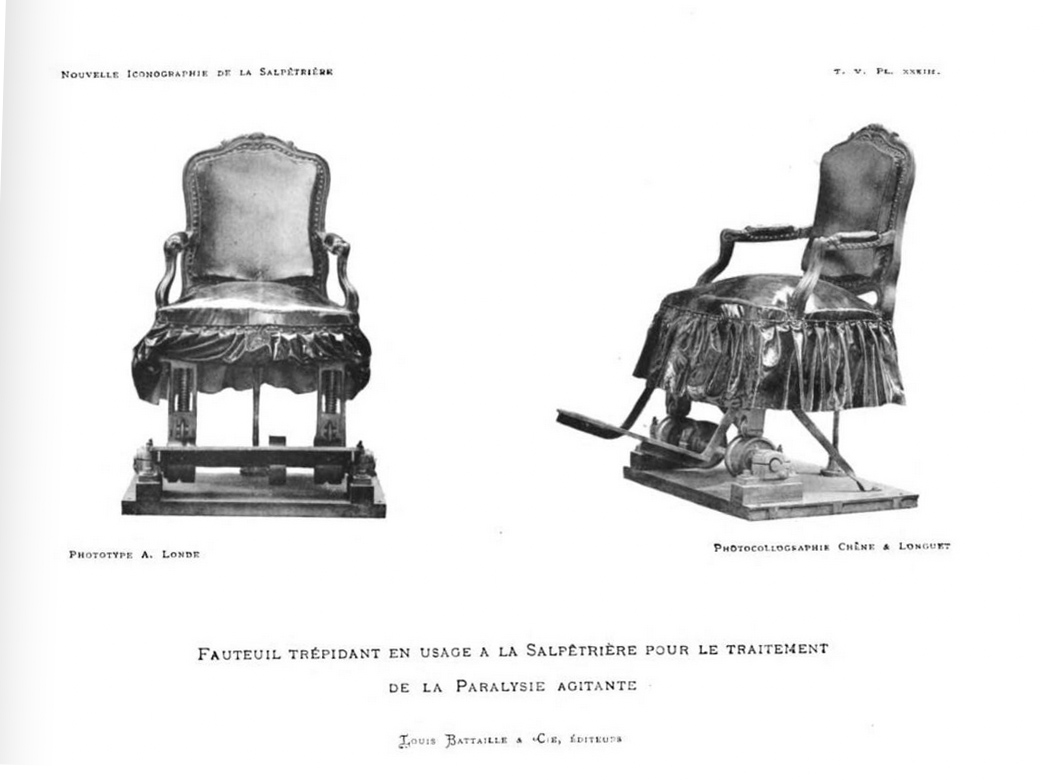
Evidence from Charcot’s clinic suggests that submerged conceptions of the neurophysiological potential of acoustic vibrations nonetheless continued to play a role in pioneering psychiatric and physiological research long after substantial progress had been made by scientists such as Johannes Peter Müller, Emil du Bois-Reymond, and Eduard Hitzig and Gustav Fritsch with regard to the actual electrical mechanism of nervous transmission. Thus, theories about the nerves’ special susceptibility to certain kinds of sounds, which had been widespread in the preceding century, continued to exert authority well after their baseline assumptions had been either fully discredited or substantially refined. Understanding “La médecine vibratoire,” to use Charcot’s term, thus requires us to recognize the broader social and scientific context in which it was embedded, one forged in part — probably unbeknownst to practitioners themselves — by concepts borrowed from music’s acoustic and expressive properties. This unexpected coexistence of different regimes of knowledge is particularly evident in experiments involving psychic symptoms, such as Charcot’s attempts to provoke catalepsy by the sound of a tuning fork, which implicitly departed from the assumption that the hysterical patient’s nervous system would somehow be uniquely responsive to vibratory stimuli via some form of harmonic resonance (Charcot experimented with a range of stimuli, including bright electric lights and gongs).
The idea that sonic vibrations have a direct and powerful effect on the nerves via sympathy — an idea whose origins can be traced directly to the 18th century — is still powerfully attractive today. As a quick Google search makes abundantly clear, tuning forks, alongside better-known therapeutic mainstays such as gongs and Tibetan singing bowls, have experienced a surprisingly long afterlife as healing devices in the alternative medicine community. One article on tuning fork therapy describes the practice as entailing “the ‘energetic activations’ of specific parts of the body.” Though it would be easy to simply dismiss such ideas as quackery, the modern music therapy literature includes a number of accounts of the successful application of tuning forks in a therapeutic context, even if only to achieve a placebo effect, suggesting that this form of treatment can be productively employed by patients and healers who accept the notion that certain frequencies can induce material changes in the body.
From an entirely different perspective, a 21st-century version of Charcot’s attempt to treat Parkinson’s disease with vibrations can be found in the technique of deep brain stimulation, in which a surgically implanted electrode transmits electrical impulses directly into the patient’s basal ganglia. The past few decades have also seen the emergence of new noninvasive techniques such as transcranial magnetic stimulation, which delivers an electrical current to the scalp and skull by means of electromagnetic induction. The exact mechanism by which these interventions relieve symptoms is not entirely understood, but the devices provide periodic stimulation — that is, regular electric vibrations — and have been used by researchers and therapists for a variety of purposes, from interfering with or facilitating perception to the treatment of major depressive disorder.
Finally, within the contemporary neuroscientific community, research has sprung up around the idea that brain rhythms, or “distinct patterns of massed [electrical] neuronal activity associated with specific behaviors,” exist endogenously and that these rhythms somehow align with both the external world and internal biological structures and mental activity. Some researchers have argued that if two connected cells, connected cell populations, or connected areas display similar neuronal oscillatory activity — measured by imaging technologies such as electroencephalography (EEG) or magnetoencephalography (MEG) — so that they are mathematically coherent, they may be understood as communicating, that is, as jointly processing information. Similarly, the hypothesis that endogenous brain rhythms, that is, neural oscillations, are entrained by some external stimulus and that, consequently, oscillation-based entrainment has some kind of function for perception has been well demonstrated in the case of the rhythmic structures characteristic of music and speech.
The striking parallels between these ideas and Hartley’s observations on the electric and vibratory nature of brain function remain an intellectual curiosity, yet they invite us to speculate whether the historical preexistence of a paradigm of vibratory influence on the nervous system made researchers more open to the possibility of a phenomenon such as interneural coherent or “sympathetic” communication. More broadly, an awareness of how earlier epistemes can continue to exert a hidden attraction for decades if not centuries invites us to consider the historical contingency of our current conceptions of the mind and body and to ponder how the intertwined histories of music, neuroscience, and neurology might indirectly continue to affect the assumptions we make about our brains and minds.
Carmel Raz is a Research Group Leader at the Max Planck Institute for Empirical Aesthetics in Frankfurt, Germany, where she leads a group entitled “Histories of Music, Mind, and Body.” This article is excerpted from the volume “The Science-Music Borderlands.” An open access edition of the book is freely available for download here.
Acknowledgments: This chapter draws in part on material that appeared in my dissertation “Reverberating Nerves: Physiology, Perception, and Early Romantic Auditory Cultures” (Yale University, 2015), as well as a blog post I wrote for AMSNow in 2015. I would like to thank David Poeppel and David E. Cohen for their help with this piece.

